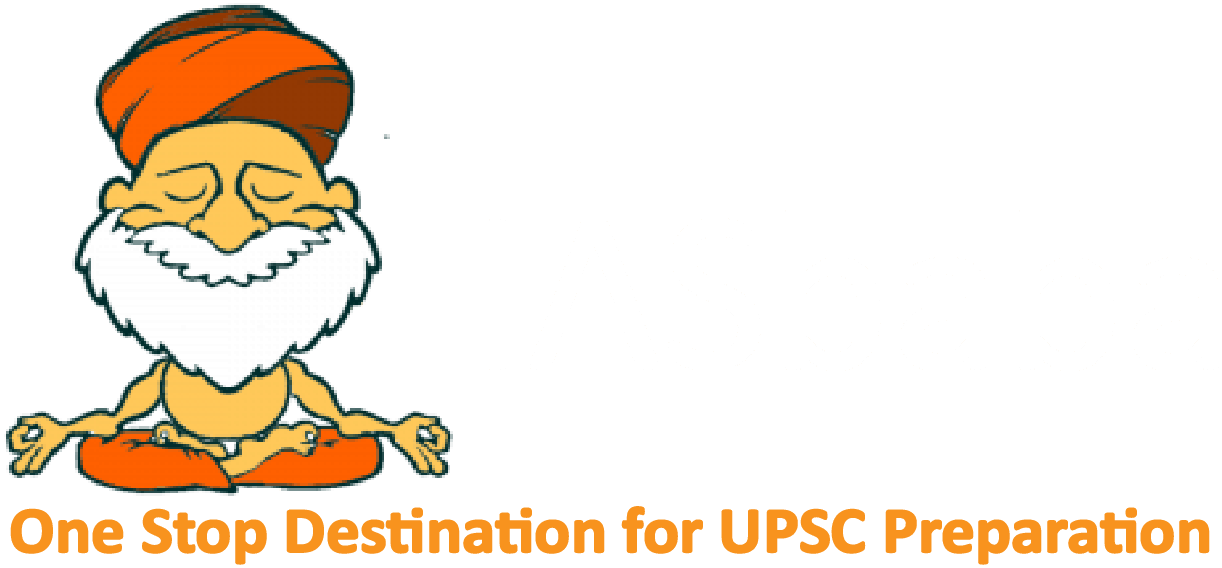IASbaba's Daily Current Affairs Analysis
rchives
(PRELIMS Focus)
Category: POLITY
Context: The Supreme Court of India dismissed a plea against Muslim author Banu Mushtaq inaugurating the Mysuru Dasara festivities.
The petitioner argued that only Hindus could perform the ritual, but the Court emphasized secularism, equality, and fraternity as constitutional principles. It noted that the State of Karnataka is secular and cannot favor any religion. Citing past precedents, the Court held that religious practices cannot hinder state functions or equality. It clarified that Mushtaq’s role was political, not religious, and reaffirmed that the State cannot exclude anyone on religious grounds.
Learning Corner:
Preamble of India:
- The Preamble is the introductory statement to the Constitution of India, adopted on 26th November 1949 and enforced from 26th January 1950.
- It declares India to be a Sovereign, Socialist, Secular, Democratic, Republic.
- It highlights four key objectives: Justice (social, economic, political), Liberty (of thought, expression, belief, faith, worship), Equality (of status and opportunity), and Fraternity (assuring dignity and unity of the nation).
- The 42nd Amendment Act, 1976 inserted the words “Socialist”, “Secular” and “Integrity”.
- The Supreme Court in the Kesavananda Bharati (1973) case held that the Preamble is part of the Constitution and reflects its basic structure.
- It acts as a guiding principle for interpretation of the Constitution, embodying the ideals of the freedom struggle and vision of the Constituent Assembly.
Source: THE HINDU
Category: CULTURE
Context : Prime Minister Narendra Modi will review the progress of the National Maritime Heritage Complex (NMHC) at Lothal, Gujarat, on September 20, 2025.
The ₹4,500 crore project will showcase India’s maritime history and serve as a hub for tourism, research, education, and skill development.
Key Highlights:
- World’s tallest lighthouse museum (77 m), theme parks, floating restaurant, tent city, and a maritime university.
- Spread over 375 acres with 14 galleries depicting India’s maritime legacy from the Harappan era to modern times.
- Located at Lothal, an ancient Indus Valley port city, to revive its maritime significance.
- PM will also review ongoing construction and inaugurate multiple projects worth over ₹34,200 crore in Gujarat.
Learning Corner:
Major Harappan (Indus Valley) Sites & What They Are Known For
- Harappa (Punjab, Pakistan) – First site excavated; evidence of urban planning, granaries, and cemeteries.
- Mohenjo-daro (Sindh, Pakistan) – Great Bath, Great Granary, advanced drainage system.
- Lothal (Gujarat, India) – Dockyard, bead-making and semi-precious stone craft, evidence of maritime trade.
- Dholavira (Gujarat, India) – Unique water management system (reservoirs, step-wells), signboard with Indus script.
- Kalibangan (Rajasthan, India) – Evidence of fire altars, earliest ploughed agricultural fields.
- Banawali (Haryana, India) – Both pre-Harappan and Harappan phases, barley cultivation, fortifications.
- Rakhigarhi (Haryana, India) – Largest Harappan site in India, terracotta figurines, evidence of town planning.
- Chanhudaro (Sindh, Pakistan) – Bead-making, shell and bone work, toy carts, craft specialization.
- Surkotada (Gujarat, India) – Evidence of horse remains, defensive architecture.
- Kot Diji (Sindh, Pakistan) – Pre-Harappan fortified settlement, distinctive pottery.
Source: THE HINDU
Category: DEFENCE
Context: The Indian Army is rapidly expanding drone induction, aiming for every soldier to be drone-trained by 2027.
Inspired by recent conflicts and Operation Sindoor, drones are being integrated as core battlefield assets.
Key Highlights:
- Drone training embedded in 19 major academies, including IMA and OTA.
- Every infantry battalion to have a drone platoon; artillery and other units to get counter-drone systems and loiter munitions.
- “Eagle in the Arm” concept envisions drones as standard tools alongside rifles.
- Over 1,000 drones and 600 simulators being procured; universal training by 2027.
- Roles include surveillance, precision strikes, logistics, and medical evacuation.
Learning Corner:
Different types of drones:
- Based on Usage
- Surveillance / Reconnaissance Drones – Used for intelligence gathering, border patrol, disaster management (e.g., quadcopters with cameras).
- Armed Drones (UCAVs) – Equipped with missiles/precision weapons for combat (e.g., MQ-9 Reaper, India’s Heron TP).
- Logistics Drones – Carry supplies, ammunition, or medical aid in conflict and disaster zones.
- Agricultural Drones – Crop monitoring, spraying pesticides/fertilizers, yield assessment.
- Commercial Drones – Used for photography, delivery services, mapping, and infrastructure monitoring.
- Based on Design/Structure
- Multi-Rotor Drones – Quadcopters, hexacopters; easy to fly, short range, mostly for photography and small payloads.
- Fixed-Wing Drones – Airplane-like design, longer endurance, larger coverage, used in surveillance and mapping.
- Hybrid VTOL (Vertical Take-Off and Landing) – Combine multi-rotor and fixed-wing, flexible for both short- and long-range missions.
- Based on Range & Altitude (Military Classification)
- Nano Drones – Very small, used by soldiers for short-range reconnaissance.
- Mini / Micro Drones – Tactical use, range up to a few kilometers.
- MALE (Medium Altitude Long Endurance) – For surveillance and armed roles, operate for 24+ hours at medium altitudes.
- HALE (High Altitude Long Endurance) – Strategic surveillance, very high endurance and range.
Source: THE HINDU
Category: INTERNATIONAL
Context : In September 2025, seven new natural heritage sites from India were added to UNESCO’s Tentative List, taking the total to 69 properties (49 cultural, 17 natural, 3 mixed).
Newly Added Sites:
- Deccan Traps at Panchgani and Mahabaleshwar, Maharashtra
- St. Mary’s Island Cluster, Karnataka
- Meghalayan Age Caves, Meghalaya
- Naga Hill Ophiolite, Nagaland
- Erra Matti Dibbalu (Red Sand Hills), Andhra Pradesh
- Tirumala Hills, Andhra Pradesh
- Varkala Cliffs, Kerala
Significance:
- Highlights India’s commitment to preserving geological and ecological diversity.
- Represents a shift from focusing only on biodiversity to geological heritage and key Earth epochs.
- Sites include ancient volcanic regions, coastal formations, and significant caves with scientific and tourism value.
- Entry on the tentative list is the first step toward full UNESCO World Heritage status, promoting protection, sustainable development, and geotourism.
Administration:
- The Archaeological Survey of India (ASI) compiles and submits these nominations, reinforcing India’s role in global heritage preservation.
Learning Corner:
UNESCO World Heritage Sites (WHS)
- Definition: Sites recognized by UNESCO for their cultural, natural, or mixed significance of outstanding universal value to humanity.
- Categories:
- Cultural Sites – Monuments, architectural works, or urban settlements (e.g., Taj Mahal, Jaipur City).
- Natural Sites – Natural landscapes, ecosystems, or geological formations (e.g., Sundarbans, Western Ghats).
- Mixed Sites – Sites with both cultural and natural importance (e.g., Khangchendzonga National Park).
- India’s WHS:
- As of 2025, India has 42 World Heritage Sites: 29 cultural, 12 natural, 1 mixed.
- Additionally, 69 sites are on the Tentative List, the first step toward nomination.
- Significance:
- Ensures protection, conservation, and global recognition.
- Promotes sustainable tourism, education, and research.
- Helps safeguard heritage for future generations.
- Administration:
- In India, the Archaeological Survey of India (ASI) and the Ministry of Culture manage nominations and site protection.
- UNESCO Criteria: Sites are evaluated based on ten criteria, six cultural and four natural, emphasizing outstanding universal value.
Source: PIB
Category: INTERNATIONAL
Context: The United States has revoked its sanctions waiver for operations at Iran’s Chabahar Port, effective 29 September 2025.
- Entities involved with the port, including operators and financiers, may face US penalties under the Iran Freedom and Counter-Proliferation Act (IFCA).
- Strategic importance for India:
- Provides a trade route to Afghanistan and Central Asia bypassing Pakistan.
- Integral to the International North-South Transport Corridor (INSTC).
- India has a 10-year operational contract for the Shahid Beheshti terminal and has invested significantly in port development.
- Implications:
- Creates uncertainty for India’s regional connectivity goals and humanitarian/commercial shipments.
- May affect India-Iran cooperation and regional geopolitics, as Chabahar counters the China-backed Gwadar Port in Pakistan.
Learning Corner:
India’s Interests in Foreign Ports
India engages with foreign ports for strategic, trade, and maritime security purposes, under initiatives like Sagarmala, Indian Ocean maritime partnerships, and the Security and Growth for All in the Region (SAGAR) doctrine.
Key Ports:
- Chabahar Port, Iran
- India’s strategic access to Afghanistan and Central Asia bypassing Pakistan.
- Developed in partnership with Iran and Afghanistan; used for trade, energy, and logistics.
- Port of Duqm, Oman
- Long-term lease and collaboration for industrial and naval purposes.
- Acts as a hub for Indian maritime trade and strategic presence in the Arabian Sea.
- Hambantota Port, Sri Lanka
- India monitors and provides technical support to counter external influence.
- Important for maritime security in the Indian Ocean Region (IOR).
- Sittwe Port, Myanmar
- Linked to the Kaladan Multi-Modal Transit Transport Project.
- Provides connectivity for trade and strategic outreach to North-East India.
- Assumption Island, Seychelles (Indian Navy interest)
- Plans for logistics and surveillance support to enhance maritime domain awareness.
- Ports in Mauritius and Madagascar
- India supports port development under Indian Ocean security partnerships.
- Strengthens maritime trade and strategic surveillance in the Western Indian Ocean.
Significance:
- Enhances maritime security, trade routes, and regional influence.
- Supports India’s vision of SAGAR (Security and Growth for All in the Region).
- Acts as a counterbalance to China’s Belt and Road Initiative (BRI) and port investments in the IOR.
Source: THE HINDU
(MAINS Focus)
Introduction (Context)
The 2025 Global Conference on Climate and Health, hosted by Brazil in July 2025, brought together delegates from 90 countries to draft the Belém Health Action Plan, which will shape the global climate–health agenda at COP30.
India’s absence was a missed opportunity, as its developmental policies provide valuable lessons for operationalising an integrated climate–health framework.
What is climate-health vision?
- Climate–Health Vision refers to a strategic approach that recognizes the close link between climate change and human health and aims to address both simultaneously.
- It focuses on designing policies, programmes, and actions that improve health outcomes while mitigating or adapting to climate change.
Key Lessons from India’s Welfare Programmes
India’s welfare programmes provide important lessons on how policies can achieve multiple developmental goals simultaneously. Some examples are:
Pradhan Mantri Poshan Shakti Nirman (PM POSHAN)
- It is India’s flagship school nutrition programme, covering over 11 crore children in nearly 11 lakh schools.
- Beyond providing meals, it links health, education, agriculture, and food procurement systems.
- By promoting the use of millets and traditional grains, it addresses malnutrition and encourages climate-resilient agricultural practices, making the food system more sustainable in the long run.
Swachh Bharat Abhiyan
- It has had a wide-ranging impact on sanitation, public health, human dignity, and environmental protection.
- By promoting cleanliness and hygiene, it reduces disease risk and fosters community awareness about environmental sustainability.
Mahatma Gandhi National Rural Employment Guarantee Act (MNREGA)
- It has contributed to improving rural livelihoods while simultaneously restoring degraded ecosystems.
- Through environmental works such as afforestation, water conservation, and land development, it supports both income generation and ecological balance.
Pradhan Mantri Ujjwala Yojana (PMUY)
- It provides clean cooking fuel to households, significantly reducing indoor air pollution, a major cause of respiratory illnesses.
- It also reduces reliance on traditional fuels like firewood or coal, hence contributes to lower carbon emissions, showing a clear link between health improvements and climate action.
Together, these programmes demonstrate that even policies not explicitly designed as climate initiatives can create substantial health and environmental co-benefits when implemented with an intersectoral approach.
Drivers of integrated climate–health approach
- Strong political leadership: PMUY and Swachh Bharat succeeded due to direct Prime Ministerial involvement, which ensured cross-ministry cooperation. Framing climate action as a health emergency increases attention and public support.
- Community engagement: Swachh Bharat used cultural symbolism (Mahatma Gandhi’s vision), and PM POSHAN involved parent-teacher associations and school committees. Climate action should link environmental protection with societal values and health benefits.
- Leveraging existing institutions: Policies used ASHA workers, self-help groups, municipal bodies, and panchayats. Embedding climate action in existing frameworks ensures sustainability and community ownership.
Challenges
- Implementing intersectoral policies is difficult due to siloed administrative structures.
- As policies move from outputs to outcomes, conflicting responsibilities and mandates across sectors emerge.
- High LPG refill costs under PMUY persist due to business interests outweighing beneficiary needs.
- Social and cultural barriers continue to limit utilisation and equitable access without sustained reinforcement.
- Climate solutions must address structural inequities and focus on measurable outcomes, not just outputs.
Way Forward
- Strategic prioritisation: Frame climate policies around immediate health benefits, similar to how PMUY linked clean cooking to women’s empowerment.
- Procedural integration: Embed health impact assessments into all climate-relevant policies (energy, transport, agriculture, urban planning), making them as standard as environmental clearances.
- Participatory implementation: Mobilise communities using health benefits as the motivator. Empower local health workers to act as climate advocates by showing direct links between environmental changes and health outcomes.
Conclusion
India can either tackle climate change and health separately with limited results or use its welfare programmes to address them together. A coordinated, society-wide approach can bring better health, environmental benefits, and lasting impact, making bold action essential.
Mains Practice Question
Q Discuss how India’s welfare programmes provide lessons for integrating climate action and public health. (250 words, 15 marks)
Source: A climate-health vision with lessons from India – The Hindu
Introduction (Context)
September 18 was first marked as International Equal Pay Day by the United Nations General Assembly in 2019, following the efforts of the Equal Pay International Coalition (EPIC), which is led by the International Labour Organisation (ILO), UN Women, and the Organisation for Economic Co-operation and Development (OECD).
The day underscores that equal pay is not merely a legal principle but a tangible right that must be reflected in paychecks. It calls on governments, employers, and societies to ensure fairness in compensation for work of equal value.
What does equal pay mean?
- Equal pay for equal work means that individuals performing the same or equivalent tasks must receive the same remuneration, regardless of gender or other identities.
- It represents fairness and justice in workplaces, where skill, effort, and responsibility—not gender—determine earnings.
Global pay gap
- The Global Gender Gap Report 2025 by the World Economic Forum reveals that only 68.8% of the overall gender gap has been closed, leaving over 30% of inequality still unresolved.
- At the present rate, it would take around 123 years to achieve full parity in pay and opportunities worldwide.
European Union:
- In the European Union, women in 2021 earned on average 12.7% less per hour than men, and by 2023 the gap narrowed slightly to around 12.0%, showing only marginal improvement despite decades of policy efforts.
United States
- In the United States, women earned roughly 85 cents for every dollar earned by men in 2024, with Pew Research noting only minor changes in the last twenty years.
- Among younger workers (ages 25–34), the difference is smaller, with women earning about 95 cents to the male dollar, but the gap widens as age increases, reflecting slower career growth for women over time.
Australia:
- Australia’s Workplace Gender Equality Agency (2025) reported that women continue to earn significantly less than men, keeping the gender pay gap a key issue in national policy debates.
Regional variations highlight contrasting trends:
- Iceland leads the world with 92.6% of its gender gap closed, maintaining the top position for 16 consecutive years.
- Nordic nations such as Finland, Norway, and Sweden also score high due to robust equality laws and family-friendly welfare policies.
- Belgium reports one of the lowest pay gaps globally at only 1.1%, while Luxembourg has slightly reversed the trend with women earning about 0.7% more than men.
- At the other extreme, South Korea records the highest pay gap among OECD countries, with women earning 31.2% less than men, reflecting structural and cultural barriers to workplace equality.
Status in India
- India ranks 131 out of 148 countries in the Global Gender Gap Report 2025, slipping from 129 in 2024.
- Overall gender parity score: 64.1%, far below the global average.
- Education parity: High levels achieved in school enrolment and literacy.
- Economic participation: Alarmingly low at 40.7%, with women underrepresented in leadership and earning less for similar work.
The data underscores that while some regions demonstrate near parity, global progress remains slow, requiring stronger legal safeguards, cultural change, and transparent pay structures to close the remaining gap.
Why Pay Gaps Exist
- Occupational segregation places women in lower-paying sectors like teaching, caregiving, or social services, while men dominate higher-paying fields such as engineering, finance, and technology.
- Career interruptions for caregiving responsibilities—whether for children or elderly parents—slow women’s earning growth and limit promotions, while men often experience uninterrupted career progression.
- Leadership underrepresentation keeps fewer women in senior managerial or CXO-level roles, where salaries are significantly higher and decision-making power greater.
- Pay secrecy allows discrimination to persist; studies show that organisations with transparent salary ranges tend to have smaller gender pay gaps.
- Cultural and systemic biases influence hiring, promotion, and performance evaluations, creating barriers that perpetuate unequal pay even within the same company or field.
Implications
- The gender pay gap affects not just salaries but also savings, pensions, and long-term financial independence, leaving women with less security in retirement.
- Midlife women, particularly those in their 40s, often have smaller retirement funds and may need to rely on family support or government assistance.
- Lower earnings reduce investment capacity, limiting wealth accumulation over time and widening economic inequality.
- Family income is directly impacted, especially in single-parent or one-income households, making it harder to meet education, healthcare, and lifestyle needs.
- Wage inequality lowers overall productivity, as women’s skills and potential remain underutilised in the workforce.
- The International Labour Organisation (ILO) estimates that closing the gap could add trillions of dollars to global GDP, making it an economic imperative as well as a social one.
Way Forward
- Implement pay transparency laws requiring companies to publish gender pay data, as seen in the EU, to expose hidden wage gaps and drive corrective action.
- Strengthen legal safeguards by enacting and enforcing clear equal pay legislation, which has been shown to reduce disparities in countries with strong frameworks.
- Promote supportive workplace practices such as flexible schedules, affordable childcare, and parental leave to help women balance career growth with family responsibilities.
- Ensure corporate accountability through mandatory annual pay audits, public reporting, and internal review mechanisms to track and close wage gaps.
- Encourage skill development and leadership training programs like She-Marches to empower women with negotiation abilities, confidence, and career growth opportunities.
- Foster awareness and advocacy by using platforms like International Equal Pay Day to highlight data-driven evidence and keep public attention on wage inequality.
Conclusion
The gender pay gap persists worldwide, with women still earning 15–20% less than men for similar work. International Equal Pay Day reminds us that achieving equal pay is vital for fairness, economic growth, and social justice, demanding stronger laws, corporate accountability, and cultural change to make equality a reality.
Mains Practice Question
Q Despite constitutional guarantees and growing awareness, India continues to witness a wide gender pay gap. Discuss the underlying reasons and suggest policy measures to ensure equal pay for equal work. (250 words, 15 marks)
Source: Equal pay for equal work: What the data tells us on International Equal Pay Day – The Hindu














